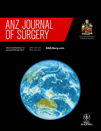
FOOT & ANKLE
Primary ankle ligament augmentation vs. Brostrom-Gould procedure for ankle instability
This report has been verified
by one or more authors of the
original publication.
ANZ J Surg. 2015 Jan;85(1-2):44-8.
41 physically active patients with chronic instability (>3 months) of the calcaneofibular ligament and the anterior talofibular ligament were randomized to receive either the modified Brostrom-Gould procedure or the synthetic ligament augmentation reconstruction system. The purpose of this study was to compare the clinical outcomes of both aforementioned procedures. Functional outcomes for the ankle and hindfoot were assessed through the foot and ankle score (FAOS) questionnaire at baseline, 12, and 24 months following surgery. The results indicated that patients who received the ligament augmentation reconstruction system had significantly greater FAOS scores, indicating that the procedure effectively lowered pain and symptoms, and improved overall quality of life.
Unlock the full ACE Report
You have access to {0} free articles per month.Click below to unlock and view this {1}
Unlock NowCritical appraisals of the latest, high-impact randomized controlled trials and systematic reviews in orthopaedics
Access to OrthoEvidence podcast content, including collaborations with the Journal of Bone and Joint Surgery, interviews with internationally recognized surgeons, and roundtable discussions on orthopaedic news and topics
Subscription to The Pulse, a twice-weekly evidence-based newsletter designed to help you make better clinical decisions
Exclusive access to original content articles, including in-house systematic reviews, and articles on health research methods and hot orthopaedic topics
Or upgrade today and gain access to all OrthoEvidence content for just $1.99 per week.
Already have an account? Log in


Subscribe to "The Pulse"
Evidence-Based Orthopaedics direct to your inbox.
{0} of {1} free articles
Become an OrthoEvidence Premium Member. Expand your perspective with high-quality evidence.
Upgrade Now













































































